Keating Competition
Indiana University, Purdue University, Franklin College Students Take Top Prizes at Keating Competition
Ten student journalists from around the state of Indiana set out Saturday, Oct. 19, in search of a story that might earn them a top prize of $3,000 for the 38th annual Thomas R. Keating writing contest.
In five hours, they had to interview, write and file a creative, compelling and well-written story.
The assignment: Everyone has a story. This is what Tom Keating wrote about five days a week at The Indianapolis Star. He wrote about ordinary people with stories that could inspire, answer questions and share the humanity of Indianapolis. Write a story about someone visiting Indianapolis.

Ruth Cronin
1st Place - Ruth Cronin
Indiana University
Ruth Cronin is a senior from Zionsville, IN. She is a journalism major and Ernie Pyle Scholar at Indiana University. Ruth is an intern and student board member for the Arnolt Center for Investigative Journalism. She has worked on the volleyball, local business, and breaking news beats for the Indiana Daily Student newspaper. This past summer she was the investigative and enterprise intern at the Cincinnati Enquirer. In addition to her journalism involvements, Ruth is also a member of Kappa Alpha Theta and IU Dance Marathon.
Judges’ comment:
“We liked that the story used a variety of anecdotes, including from employees, to help the reader visualize what it’s like to experience the museum. It weaved the stories together very well from beginning to the end.”
First Place winner:
A family of three stands in the entrance of the Children’s Museum of Indianapolis, gazing up at the blue water clock. It circulates water through its tall glass structure with each minute that passes by.
Around them kids run by, screaming and laughing. Parents pushing strollers and lugging snacks and jackets follow behind.
Joo Hyun arrived in Indianapolis from South Korea just five days ago. She is currently living in a hotel with her husband and daughter – Indiana is their new home.
Hyun is a travel nurse who has just relocated to Indianapolis. She tries not to move very often for the sake of her teenage daughter, who speaks no English.
“I have to consider my child and her schools,” Hyun said. “And making friends is a very important issue for her.”
So far, they have spent most of their time in Indianapolis looking around the area and visiting grocery stores, but Hyun’s daughter wanted to come to the Children’s Museum. It’s the first place they have come just to enjoy themselves since they arrived.
“We really enjoy this moment,” Hyun said.
The three of them turn and walk into the museum together, ready to explore.
The Children’s Museum of Indianapolis is the largest Children’s Museum in the world, bringing in over a million visitors per year. Some are Hoosiers with a membership to the museum, who visit every week. Others, like Hyun, come from across the country and the world.
—
One level above, Rebecca Pierce and her daughter Emma are heading into the Archaeology lab.
Emma, age 10, pulls a pair of orange safety glasses over her blonde hair and grabs a brush, ready to uncover the bones that are peaking through the rocks beneath her.
Pierce was planning to run a half marathon in Michigan this weekend, and when those plans fell through the family decided to pick a city to explore on their long weekend. They landed on Indianapolis.
“We just wanted a new state to try,” Pierce said.
They drove five and a half hours from Madison Wisconsin and then found the Children’s Museum on Google. Emma had never been in a museum like this before. She was smiling ear to ear.
—
Across the museum, in the dinosaur exhibit, Suzanne Decamp walks alongside her daughter and grandkids. They’re from Lexington Kentucky, in town for a wedding.
Suzanne brought her daughter here when she was young, and today she is back with her grandkids, ages 1 and 3. It’s fun to be back with them, all these years later, she said.
They weave through the path packed with families. A dinosaur skeleton towers above them, and thunder noises vibrate through the dimly lit room. Decamp wonders what will have changed since she was last here.
—
In the museum store, Bria Martin and Anthony Cuevas stand behind the register in dark green Children’s Museum of Indianapolis sweatshirts. They are surrounded by Children’s Museum swag, stuffed animals and shiny gems.
Cuevas and Martin are both from Indianapolis and grew up coming to the museum.
“It was my favorite place,” Cuevas said with a smile.
While they’re working, they get to see kids from all over experience that same joy.
They check out customer after customer. They have met visitors from Puerto Rico, Italy, France, Germany, Belgium, and Japan.
Martin talks to these visitors about things they might recognize in the store, such as their Japanese gacha tokens. They even take inspiration from their visitors, with their cultures and interests influencing some of the museums pop-up shops.
“You get a lot of inspiration from them, and a lot of knowledge,” Martin said.
Cuevas enjoys learning about new cultures just by observing how visitors interact with one another, especially when international schools come on trips come to the museum.
“It’s really cool getting to see little snippets of the world,” Cuevas said.
—
After exploring every exhibit in the museum, Hyun and her family walk towards the exit.
During her visit Hyun learned about new people, like Nelson Mandela and Ryan White. She said the museum taught her about the culture and history of her new home.
On her way out she turns to take a photo of her husband. He smiles and holds up a peace sign. She snaps the photo, the water clock in the background continuing to fill, and the family heads for the door.
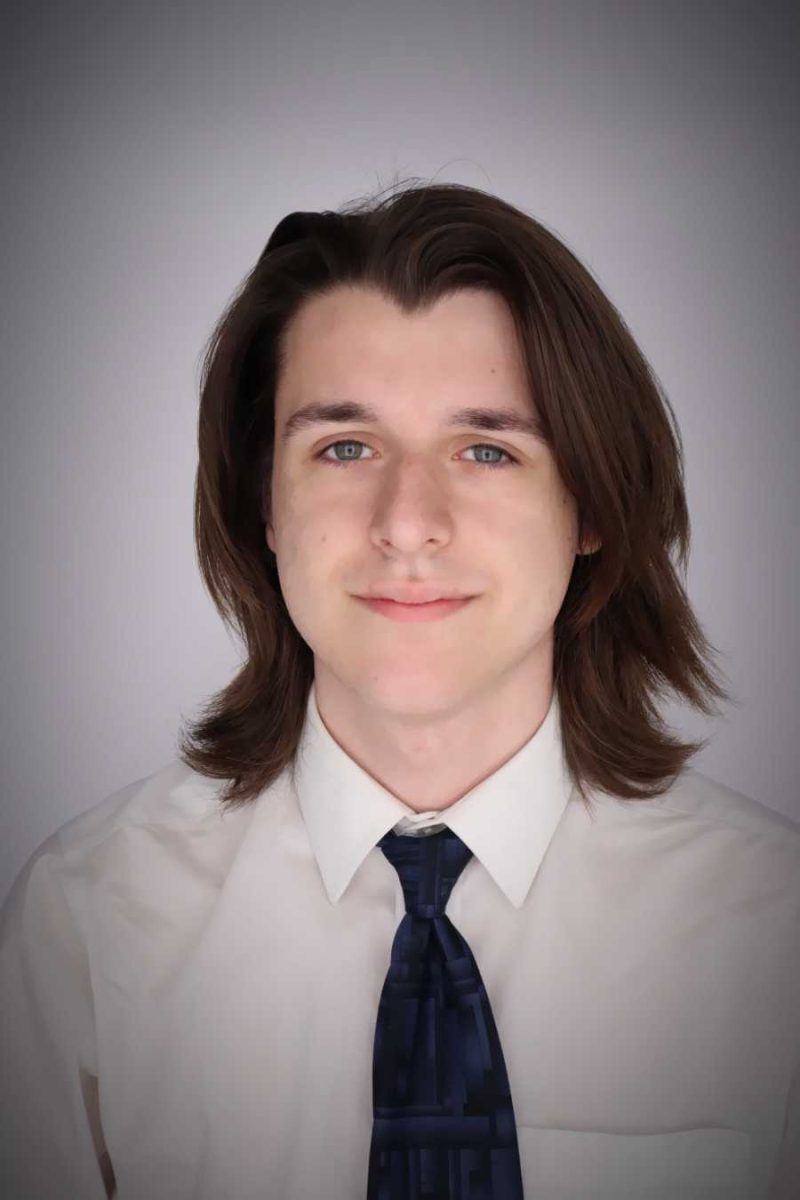
Seth Nelson
2nd Place - Seth Nelson
Purdue University
Seth Nelson is a junior at Purdue University and has been a student journalist for three years, spending a summer at the Wisconsin State Journal and currently working as the Editor-in-Chief of the Purdue Exponent. Throughout his time at both publications, he has reported and written about a variety of subjects, from poverty and drug addiction to concerts and politics. He has helped report breaking news, followed trials, written articles from the sides of crime scenes and produced long investigative series into landlords and Purdue administrators. In his free time, he likes to read and practice photography.
Judges’ comment:
“The descriptive words really made this story stand out, and the meaningful topic was a great choice.”
Second Place entry:
Ray Martin has seen more deaths than he cares to recall. But he’ll never forget any of their faces, even though he’s lost count.
The 58-year-old took a final drag on his dwindling cigarette, before throwing it onto the curb behind him as a trail of smoke curled into the chilly morning air. A gray Martin Tours name badge hung from his neck.
He may share a name with the tour bus company for which he works, but there’s no relation.
“Just a fluke,” the Kentucky native chuckled, a wry smile breaking through as he pulled another Marlboro from its pack.
It’s been a long road from joining the Navy when he was 19 all those years ago, to now standing with his bus outside the Embassy Suites, a luxury hotel in downtown Indianapolis, waiting for the Eastern Kentucky University men’s basketball team so he could drive them to a scrimmage against Bradley University.
Whenever he talks about the time he served in the Navy — the first decade or so of his adult life in total — people tend to assume he witnessed all this death during a deployment, he said.
The truth is worse: He’s only ever seen regular people die, and he was working as a civilian driver almost every time it happened.
Scratching his graying beard, he recounted some of the people he’s seen die: A trucker here, a stranger there, occasionally a friend. It’s never been pretty, he muttered, and it gets old fast.
Martin paused, cigarette smoke swirling around him.
“Anyone who tells you they get numb to it, they’re lying,” he said in between puffs.
For most of the time since he re-entered civilian life in 1998, he has been working in a variety of driving jobs across the country: driving semi trucks for shipping companies, bussing tour groups, helping on emergency vehicles and more.
Transporting university basketball teams is only his most recent venture, a form of “pre-retirement” before he actually retires.
“Driving is more dangerous than we give it credit for,” Martin said. He shrugged. “And nowadays, you might crash and people just keep driving. Or they’ll swerve to see how close they can get without hitting you.”
Car crashes have accounted for many of the deaths he’s witnessed. In one instance, he saw a woman in a Miata sports car roll over on a highway while he was bussing a tour group.
“We tried to get her out, tried to drag her out of the car,” Martin said, looking out over the street. He shook his head and looked at his feet, then pinched the bridge of his nose.
“She died right there. Covered up by the EMTs before we had even left.”
Another time, multiple cars crashed in front of him while he was driving his semi through Virginia. A helicopter had to take away the bodies before he could get his truck moving again, he said.
“I see their faces every day. The woman in the sports car, the people lying on the
highway, the guy I once had to drag from a river. I close my eyes and there they are.”
By official accounts, driving in the United States is getting less dangerous. In 2022, the number of fatalities from crashes was at its lowest point since 1980, according to Department of Transportation data analyzed by the nonprofit Insurance Institute for Highway Safety.
But that’s still over 42,000 people who died from crashes that year, according to the data. Martin said he isn’t surprised crashes are so common — he’s seen enough to know it, but they’re not stories he would ever share with the group of eighth graders he occasionally busses to Washington D.C.
“Instead, I just tell them to stay in their seats or they’ll end up down here,” he said, laughing as he gestured to the floor of his bus. “Or through the windshield.”
Thankfully, Martin’s never crashed while chauffeuring around middle schoolers and college athletes — not yet, anyway. The possibility that he could someday is a thought that terrifies him.
“I’ve only had some dings here or there,” he said. “Cars sticking too far out from the curb, scraping. Thank God it’s never been worse.”
“Blood pressure medication helps,” he joked when asked how he copes with everything, especially the rowdy middle school classes. “It’s a good thing too, because otherwise I’d call one of them an asshole and get bad reviews.”
In a morbid way, the stress makes him miss the relative “safety” of being a seabee in the Navy, he said.
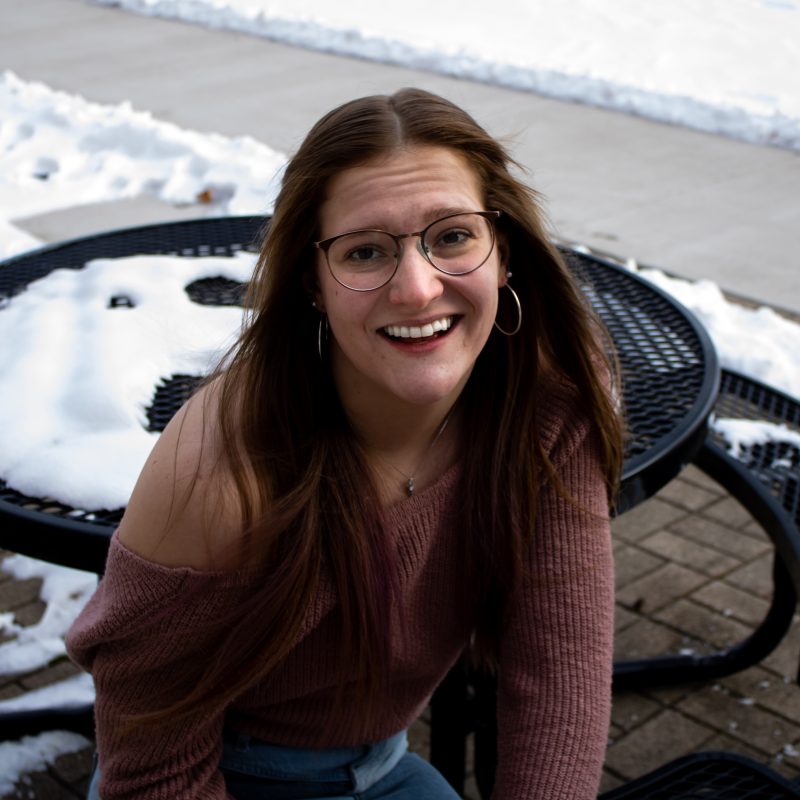
Maggie McGuire
3rd Place - Maggie McGuire
Franklin College
Maggie McGuire is a senior at Franklin College majoring in ecology and conservation biology and minoring in math, chemistry, and multimedia journalism. In her free time, she trains with her swim club. After graduating in December, she plans on attending the University of South Alabama to receive her PhD in marine science, with dreams of doing traveling research with National Geographic.
Judges’ comment:
“The people in this story were very memorable, and the details each of them shared created a story of survival and overcoming.”
Third Place entry:
Professional wrestler. Grandmother of 11. Lupus warrior.
Adorning a sweatshirt that says ‘you are enough’ Melissa Byers, 47, was joined by two of her daughters and her husband for the 2024 Indianapolis Walk to End Lupus on October 19.
Bedford, Indiana native, Byers was diagnosed with lupus, a chronic, full-body autoimmune disease, in 2011. Byers and her family were just four of the hundreds of participants at the walk wearing the royal purple associated with lupus awareness.
“If you imagine pulling a turkey leg off at Thanksgiving, that is what it feels like with my joints,” Byers said. “My hands cramp up, I swell up everywhere, my skin burns. I take 19 pills daily and 21 on Thursdays.”
Before her diagnosis, Byers was a professional wrestler with the Wild Wrestling Championship Outlaws. Wrestling was where she met her husband, Jordan, and found an adopted family. Ultimately, her professional career was cut short due to the weakening of her bones. Instead of giving up, Byers finds new ways to take back her life. Now she works as a home-based therapist with the Department of Child Services Family Preservation unit.
“I work a lot, focusing on other things during a flare up. I have a love for helping people – I’ve dealt with many painful addictions in my family and believe that there is hope for everybody. I like to see people doing better and making a difference in their lives,” Byers said.
Even though Byers puts on a face of grit and determination, her daughter, Samantha Frye, has watched lupus steal her mother’s quality of life.
“Watching her go through it, it’s hard. We invite her to do things and a lot of time she can’t because she can’t get out of bed,” Frye said. “My son tells everybody she’s his best friend and will ask to go see Mimi, but I have to say she’s sick again. He is 5 so he doesn’t understand.”
Like millions of others affected, Byers walks with her family in hope of one day being able to live life free of lupus. Indianapolis is just one of 70 cities nation-wide to host a walk. This year, Indianapolis raised more than $50,000 and consisted of a one-mile or three-mile walk around the White River State Park Canal.
The Indianapolis chapter was organized by Zach Feuerherd, who travelled from Maryland for this event weekend. When Feuerherd’s wife’s cousin was diagnosed with lupus, he decided he wanted to help make a change. He has spent the last ten years working with the Lupus Foundation of America, which aims to improve the lives of all lupus warriors.
“Our vision as an organization is to create a life free of lupus; that’s why we are out here,” Feuerherd said. “My favorite part is events like this. It’s getting to meet our constituents who are living with lupus or have a family member or friend and getting to see the work that we are doing in action.”
Over 500 people registered for the Indianapolis walk, some coming from different states to show their support. Lacasha Lee lives in Chicago, but like Feuerherd, travels around the country to invite women battling lupus to join her sorority: Lambda Sigma Sigma Lupus Sorority Incorporated. The substitute teacher has battled multiple organ failures due to lupus. Diagnosed over two decades ago, Lee wanted to create an organization that offered women the support she wished she received.
“I was going to different walks and would always wear my paraphernalia from another organization that I’m in, Zeta Zeta Phi Beta Sorority Incorporated. I was always told by other women that ‘I wish I was in the sorority. I never joined one because I had Lupus,’” Lee said. “So, it made me realize that there’s a need for women who want a community to join, like a sorority. I just gave them a chance to do so.”
A community experiencing lupus first-hand, can help make the battle more bearable. The purpose of the Indianapolis Walk to End Lupus is to provide an avenue to that community. Byers additionally relies heavily on the support of her family. Her 11 grandchildren are everything to her, keeping her as young and happy as possible. Similarly, Lee also finds support through the many chapters of Lambda Sigma Sigma Lupus Sorority Incorporated.
“We come to these walks, we donate money for Lupus research, because we hope someday in our lifetime, that a cure can be found. Of course it is hard, but over time it has gotten better. I have learned to live with it,” Lee said. “You only have one life to live, so you can either be positive about it or be negative and I choose to be positive.”
Other finalists were: Israel Schuman, Purdue University; Ashlyn Myers, Franklin College; Kyle Smedley, Ball State University; Jay Upshaw, Indiana University Bloomington; Abigail Denault, Ball State University; Vanessa Torres, DePauw University; Alex Haddon, Purdue University
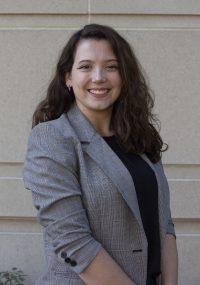 Abigail Denault, Ball State University
Abigail Denault, Ball State University
Dan and Karen Snouffer drove three and half hours from Columbus, Ohio to Indianapolis for a performance lasting 15 minutes.
They said it was still worth seeing their granddaughter, a drum major representing Downers Grove South High School in Illinois, perform at the Bands of America competition. After the performance, the pair wasted no time and walked back to their hotel to head home.
On their walk, the pair, who have been married for almost 56 years, seem to gravitate toward each other with small touches on the back of their arms or how they speak favoring the ear the other hears from better.
Indianapolis is not a city they visit often, but the last time was when Dan, who was a medical malpractice insurance defense attorney, was at a hospital association convention.
Travel was a major part of Dan’s career before he retired, he traveled to hospitals in seven states including several in their home state of Ohio, where he would give presentations as a part of his role at the Ohio Hospital Insurance Company. In one instance, he found himself at a small county hospital in southern Ohio around the late 1970s.
“I drove down from the Columbus area, and I’m dressed to kill. I’ve got a three-piece suit, a heavy-starched white shirt, and a neat tie,” Dan said thinking back to the fateful day back in his 30s.
During his presentation, his eyes are drawn to a figure at the end of the table. Dan said the man wore a white cowboy hat with a red checkered shirt and a bolo tie and listened intently to the presentation, but it was when he reached behind him for a waxed Coca-Cola cup.
“He spit his tobacco juice into this cup and I’m all wide-eyed. And he does it several times during my presentation, which only lasted eight minutes,” He said.
When he asked his friend, who served as president of the medical board there, about the man in the cowboy hat, he was told it was Bob Evans. Yes, as in the southeastern Ohio farmer and founder of the restaurant chain with 500 locations dotting the Midwest and beyond.
It was one of many tales Dan tells of his life in the insurance world, an odd pair to Karen, who seems to be opposite to him as a mixed-media artist and professor emerita at Kenyon College in Ohio. Especially ironic is that Dan is colorblind, which can add a new perspective to his viewing of his wife’s art. Karen said sometimes he will make a comment about the color of something in her art and she will have to correct him.
Through both of their careers, they have traveled around the United States and the world for his work and for her various art installations and shows. One of her shows included time in France, where she held a showcase on her father’s time serving as a member of the military police (MP) in General Geroge S. Patton’s army.
The showcase followed the path of her father, based on the letters he wrote back to his wife and the tape recordings of his recounts of his time there. He arrived with units that came 10 days after D-Day. In his two and a half service, he was notably a part of the troops that liberated the Buchenwald Concentration Camp in Weimar, Germany.
Before then, he spent time in Epernay, the capital of the region of Champagne in France, where they slept in the basement of a school.
“Every day, this little girl, who was about 10-years-old, would bring them a bottle of champagne. So, my dad liked this town because they were bringing him champagne and he was eating camembert cheese,” Karen said, which prompted a laugh from Dan.
For the citizens of Epernay, the memory of Karen’s father and the American troops left a lasting impact. When the couple visited the town, they said they were treated like royalty when she mentioned her father served there.
“I happened to be there the day of a parade, and the mayor found out that my dad had been there, so he asked me to march in the parade with them,” Karen said.
A part of his service to the town involved many of the dark sides of war, including investigating war crimes, looting, rape and seeing if any German soldiers lingered.
When his troop moved on to Weimar, he saw even more of the atrocities of the war as a part of the soldiers who guided the citizens into the Buchenwald Concentration Camp. While there, Karen said he sent a letter home, telling his wife to look for his photo in Life Magazine.
The photo was a part of the series done by Margaret Bourke-White, a famous photojournalist who documented the liberation of the Buchenwald. In the scene, her father is standing near Sergeant Quinlan next to a flatbed stacked high with the corpses of those who lost their lives at the camp. In the background, she said there stood the citizens of Weimar.
“They were getting sick. You could see them covering their mouths because of the stench,” Karen said.
In her art installation, she had the elements of her father’s experience woven throughout. When visitors entered, the audio of the letters between her parents were being read and there was a smell of gardenias, the flower her father would send her mother on Easter and Mother’s Day. The flowers were placed on hanging tree trunks, which resembled the pine forests her father mentioned in Germany, but they also held a deeper, darker meaning.
“I hung them from the ceiling, and they started looking anthropomorphic, like swinging bodies,” She said. “Well, at Buchenwald, the way they killed people was by hanging. They didn’t have a gas chamber. So, for me, that’s what they symbolize,” She said.
The show was a success and Karen said she wished she could have shared it with her father, who died in 2000. Despite seeing the horrors of World War II, her father still shared any detail she asked. As a result, she can share his stories with her son but now also with her granddaughter.
“He was not like some of the veterans, who just did not ever want to talk about that war, understandably,” Karen said. “Whenever we asked him, Dad would talk in great detail. He said in his letters to Mom, ‘Now, I know why we’re here.’ He said it was absolutely horrible.”
For some veterans, the experiences of war were too horrific to recount. Dan said his father was also a veteran of WWII, but he refused to talk about his experiences up until the day he died.
As the years pass, the last remaining veterans of WWII die out and so do their stories, just as many stories are lost to time. Stories of school basements in Epernay and wax-coated Coca-Cola cups filled with tobacco spit are in Indianapolis, living in the people and couples that are brought to the city every day.
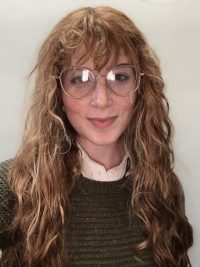 Alex Haddon, Purdue University
Alex Haddon, Purdue University
It wasn’t love at first sight. The night Sharee, a 24-year-old single mom, met Brian, who had a job sucking out duck lungs, they stayed up for hours talking.
From that conversation, Sharee decided he wasn’t the smartest person she’d ever met, but he also wasn’t the dumbest. After about six more conversations, she realized she liked him.
Now, the Dotys are married and have four children together, in addition to Sharee’s first son. Brian has worked his way up at the same duck-processing company, Maple Leaf Farms, and now works as a hatchery specialist incubating duck eggs. Sharee works as a paraprofessional for children in a special education program.
The Syracuse residents have worked their way through poverty, grief and personal trauma to build a stable, if imperfect life, for their family.
They were in downtown Indianapolis Saturday morning passing time before their eldest daughter Satiah’s band competition. They sat under an umbrella beside the Soldier and Sailors Monument, listening to the fountain roar and the ping-pong paddles whack in the pop-up park.
Sharee, now 38, was wearing a prayer necklace and hoop earrings, her curly black hair held back in a tight ponytail. Brian, also 38, was wearing an understated brown jacket.
Satiah’s childhood is completely different from theirs. The 13-year-old is a straight-A student in many extracurriculars in addition to band.
“She’ll screw around with her friends and whatnot, but she gets her work done first,” Sharee said. “She’s the only kid that figured that out.”
Like her mother, Satiah is funny, strong-willed and independent. She feels safe enough to argue with her parents and sneak extra screen time, but only a little bit.
Brian is has a somewhat strict, protective parenting style completely different from the way he was raised. Sharee said his parents were “neglectful.”
As a child, he spent entire days alone fishing with no one caring where he was. This led to brushes with serious injury. Once, he fell and cracked his head against the pier. Crediting his high pain tolerance, he found out after a doctor visit decades later that the fall had broken his skull.
Sharee, on the other hand, had a helicopter mother and an “unsafe” dad. Her parents were divorced. She had moved through three different middle schools by the time she was Satiah’s age.
“I was way worse at 13. I was hateful. I did everything I could do to ruin my mom’s life,” Sharee said. “But I took it out on her because she was safe. I try to remember that when my kids take stuff out on me.”
Today, Sharee and Brian are doing their best to raise their children without making their parents’ mistakes. If all goes well, she said, her kids will have a childhood they won’t have to recover from. At the very least, they won’t have the same traumas they did.
Her mother left high school and had Sharee as a teenager. Sharee, after a silly argument about curfew, left her mother’s house at eighteen, moved in with her boyfriend and within a couple of years, had her first son, Anakin.
But she graduated from high school.
Anakin, who was stubborn, also moved out as a teenager and also graduated from high school.
“I had made one small step ahead of my mother,” Sharee said. “So, I’m hoping his next step will just be maybe one or five more steps ahead of his mother.”
Things improve in fits and starts
Sharee met Brian at a rare night out at the bar when Anakin was five. She was sober and he was the only one of a group of “douchebag” guys who didn’t buy her drunk friend a drink.
The early years of their relationship, and later marriage, were difficult. They couldn’t afford childcare so Sharee had to become a stay-at-home mom. Anakin struggled emotionally and acted out.
The couple bought their first house in 2019 after years of working their way up. Then, in the middle of the pandemic, both of Brian’s younger siblings died of drug-related complications.
Battling grief was insanely difficult in addition to the day-to-day demands of raising a family. Brian said he distracted himself with work, but let his emotions show when his brother died, soon after his sister.
The couple believes in letting their children see them struggle, even fight, so they learn what healthy conflict and resolution looks like.
For all of their healthy strategies, they openly criticize themselves and their parenting. They worry that Satiah, who admits honey buns are her weakness, will struggle with self-control in the future, but they don’t know how to approach the problem without giving her body-image issues.
They worry about their youngest son’s temper and they worry about Anakin, living on his own and working in a factory to support himself.
But Satiyah, crouched behind a bus doing her bandmate’s makeup, is cheerful and straightforward about her parents.
Over the phone, she described her mom as “very generous and forgiving” and her dad as “very tall, generous and mostly forgiving.” She credits her parents with her middle-school success because she listened when they told her to “get off her butt.”
When asked why they’re so honest about their family’s struggles, Brian said they aren’t interested in showing the world a picture of themselves that doesn’t match reality. Their lives haven’t “been all rainbows and butterflies,” but they’re comfortable with their family’s identity.
“Most people are like, ‘Why would you want to raise kids in these times?’ Well, you’ve got to raise somebody who can handle it,” Brian said. “We have to raise dragon slayers.”
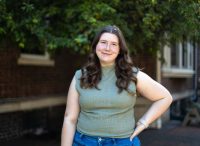 Ashlyn Myers, Franklin College
Ashlyn Myers, Franklin College
An eruption of joy bounces off the buildings on Monument Circle surrounding the small woman
bundled into her black knee-length coat and patterned scarf.
She smells the morning air swirling around her, reminiscing on a childhood that some might try to turn their back on.
She finds home wherever she goes, she says. The smells take her back home.
The pollution-scented air, in particular, reminds her of when her family heated their home with coal and wood. She knows it’s not good for the environment, and she knows most don’t enjoy the scent, but for Soňa HorǎvovalI, the pollution takes her home—nearly 5,000 miles away—to memories of growing up in Slovakia.
HorǎvovalI is in Indianapolis alone for a short business trip. She often travels for work, but it’s her first time in the Hoosier state. She finds it to be beautiful, and a bit flatter than Slovakia, but welcoming nonetheless.
In her youth, HorǎvovalI wouldn’t have had the freedom to visit Indianapolis.
In her youth, she was told the West was her enemy.
School teachers warned that the United States was planning attacks on Slovakia. They taught children that the West was coming, armed with nuclear weapons bound to destroy HorǎvovalI’s home the same way they destroyed Hiroshima and Nagasaki.
“We were preparing at school for nuclear war,” HorǎvovalI said, shaking her head as if to dismiss the memory. “There were planes, they were like military planes. They were exercising above us, but I was always imagining that it was already the enemy.”
At home, HorǎvovalI was told a different tale.
HorǎvovalI said her father was always against the Communist ideals forced on citizens at the time, and the family was punished for disagreeing.
“All of what they were saying was not really true,” she said. “Their ‘We are all equal’? Bullshit. We were not. If the people were against them [the Communist Party], then they were suffering. My father didn’t agree with them, so he was a trash man. My sister, she was very talented, and she did not get into school. My brother also [did] not.”
HorǎvovalI was 14 when the Velvet Revolution, usually used to describe the peaceful transition of power in what used to be Czechoslovakia, changed life as she knew it.
She remembers watching on the television as students peacefully protested, jingling house keys in their town squares to signal support for the revolution.
“My father . . . he asked my mom, ‘Give me keys, give me keys, give me keys!’ In the living room, he was just ringing the keys,” HorǎvovalI said with a small line of tears framing her eyes.
“He was so proud, and I was proud with him that we suddenly can have freedom.”
HorǎvovalI first traveled to the United States just four years after the Velvet Revolution. Her sister lived in Washington and invited HorǎvovalI to visit.
Seeing firsthand what was once only known to her as “The West” was surreal, she said.
Fresh off the revolution, she remembers being shocked by the diversity of cultures and backgrounds in the U.S. She didn’t experience what she was taught as a child, she said.
Contrary to the propaganda heard in her youth, people were friendly. They wanted to hear her stories, and they greeted her whenever she walked by.
More than 30 years after her initial visit to the States, the initial glamor of the U.S. has worn off. Though she said it might just be her perception now, she said her travels, including her current visit to Indianapolis, have made her see a noticeable difference between U.S. cities and where she currently lives in Germany with her husband and two sons.
In the U.S., she said she sees more people living on the street than she used to, people don’t go on morning strolls like they used to and cities aren’t quite as lively as they used to be.
Regardless of the issues she sees during her travels, she stays motivated because of her love for exploration and her love for people.
“People are all the same no matter where you go,” HorǎvovalI said. “You have to travel to know
that.”
Even in Indiana, a state hosting just over 17,000 Slovaks, according to World Population Review, HorǎvovalI has a way of feeling at home.
“Oh my god! That is lovely!” HorǎvovalI cackled and pointed as she saw a pedal pub drive by, with its passengers slurping down beers just after noon. “Drinking beer is a national sport in Germany! That’s just like home.”
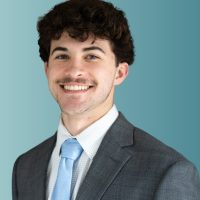 Israel Schuman, Purdue University
Israel Schuman, Purdue University
New blood meets an age-old calling
She wears spotless white sneakers, he wears mud-tinged cowboy boots.
They’re walking together through downtown Indianapolis, past a wedding party where men in suits and women in traditional Indian gowns dance in the street, on their way to a coffee shop. The man, Colton Conley, was at the shop yesterday, where he found a latte he likes. He’s not much of a coffee drinker; there are no coffee shops where he’s from.
They’re both a long way from home.
Conley flew in from Louisiana, where he grew up on a cattle farm and attends Louisiana Tech, for the National FFA Convention. The woman, Morgan Watkins, drove from Missouri. They’re here early, carrying notebooks full of material they’ll need later, when they’ll go through the beginnings of a three-day interview process that could land them on the six-person national officer board. Thirty-five others are vying for those spots.
“Big butterflies,” Conley says through a deep breath. “The more that I study about agriculture, the more I realize I don’t know.” Watkins nods her agreement as he says it.
The two will give a speech tonight that’s impossible to prepare for; they’ll draw a topic from a hat and research for 20 minutes before presenting. Conley “absolutely bombed” the same task in high school.
“Extemporaneous speaking,” Conley says it’s called, with a twang acquired in a deep-south town where you buy makeup at a Dollar General. “I sucked at it when I first started.”
Lucky for him, he’s spent years in FFA. The organization may now better prepare its members for tasks like those than the ones Conley dreams of performing when he buys his own farm someday. It’s a recent, essential organizational shift, the two say.
“It’s a lot of what we call soft skills, your ability to articulate yourself, your beliefs, becoming grounded,” Conley says. “We are teaching students through agricultural education how to prepare for their future.”
The future of agriculture is murky at best, and plain dark at worst – “Farmers right now are at their all-time low,” Watkins says – and that makes the expansion of FFA, and the agricultural community with it, vital.
Watkins exemplifies that expansion. She’s a city girl, with blond-dyed hair and pink-painted nails, from a large suburb of Kansas City, Mo; her only connection to farming was a distant cousin. She made her own connection as a high schooler through a project where she interviewed students on different agriculture-related products. She talked to one who filed a patent for a GMC trucks.
“I realized the true net of diversity our industry has,” she says.
Her passion for that diversity, though, took her away from agriculture’s roots. Ever since an internship last summer where she worked closely with crop farmers, she’s committed to giving people like her an appreciation for those who feed urban life from its outskirts.
A particular interaction did it. She was meeting with a farmer, pitching him on using one of her company’s seed brands. “I was a little nervous going in and chatting with him,” she confesses.
But through the conversation, she realized that if she could just convince the farmer that her company would best serve his customers – people who eat, put another way – she could close the sale. He just wanted the best for them.
“That led me to the firm belief that the definition of a servant leader is an American farmer,” she says.
“It’s a noble industry,” Conley says. “They work extremely hard and believe in what they do.”
That’s why they’re both concerned about where farming is headed. There’s an old saying Conley knows:
“Grandpa starts the farm, dad continues it, son destroys it.”
__
“Farmers are not rich people,” Watkins says, and laughs at the statement’s obviousness.
And they fight an uphill battle. The USDA recently released it’s five-year farm census, revealing that just 1% of America’s population are farmers; “One percent feeding the 100%,” Conley says.
The Purdue University Ag Economy Barometer Index, a nationwide measure of the ag economy, fell to its lowest level since 2016 in October. Farmers are most pessimistic about future conditions. In short, sons are destroying farms faster than people like Conley can replenish them.
Watkins’ brother, the definition of a hick, she says, dreams of owning his own farm, of being his own boss. But he says it’s impossible to do without one being passed through the family.
“It breaks my heart,” she says, and shows the need for more help for young farmers in an industry dying for them. The average age of a farmer in America is 58, Conley recites.
Much of that help comes from government funding, on the national and state level, to ease startup costs like those for land and tractors. The best farmers can win money, like the $30,000 Conley knows was awarded to a Louisiana farmer through the Farm Bureau. But there’s still not enough to go around, as Conley and Watkins urge, along with politicians the country over.
“We need to get past partisanship and start focusing on agriculture,” Conley says. “We can sit on our sides of the fence, but on both sides we’re eating.”
What most don’t understand, the two say, is that the single mom leaving the grocery store with sticker shock has more reason to feel for farmers than be upset at the prices of the food they grow.
“I think it’s important to bridge the gap between the two,” Watkins says. “You know, yeah, your food prices are high, but the farmers are not to blame.”
Most of them are just “praying they break even,” Watkins says, as crop prices continue to languish. It’s had a mental health toll; opioid addiction is 1.5 times more common among farmers, suicide 3.5 times more common. Crop growers one disaster from losing everything live in areas and come from generations where feelings often are buried.
It’s these problems and others, like the increasing complexity of farming that allows one farmer to feed more people than ever, while at the same time alienating the older generation, that FFA is needed to address. Conley and Watkins, should they gain acceptance to the national officer board, will practice that problem solving. They’ll go from meetings with sponsors and supporters to meetings with students, listening and sharing concerns from across the agriculture world.
Collaboration is the only way forward, Conley thinks, and it starts in fiercely student-led FFA. It will be students, in fact, who decide whether Conley and Watkins make the board.
One time, at a state delegation Conley attended with 400 FFA student leaders, he saw his peers come together. The topic was a summer retreat for FFA members. It’s a lot of fun Conley says – there’s a zipline – but it isn’t cheap.
When discussion on raising the price of admission came up, everyone had something to say.
“Even the kids in the back of the room on their phones started watching,” Conley says.
Some said the additional activities the increased costs would allow were worth it; others said going was already expensive enough. In the end, the former group won the vote, and the cost was raised. But the result isn’t the important part, Conley says as he leans forward and puts his elbows on the table. His eyes are wide. “The impact comes from the student voices.”
The two, friends since meeting at an FFA event in high school, review notes for possible speech topics for a while before getting up to leave. The latte was as good as it was yesterday, Conley assures.
Then they go back onto the sidewalks of the concrete island so far from farms, where very soon a slice of the those noble farmers’ future will be decided.
People everywhere, the ones who eat anyway, are counting on them.
 Jay Upshaw, Indiana University
Jay Upshaw, Indiana University
The city of Indianapolis always has always had various sites that brought different people around the world to come visit. This weekend in particular, The Lucas Stadium and Convention Center seemed to be a popular site. The stadium opened in 2008, and since its inception, it has managed to draw hundreds of thousands of spectators a year. On the weekend of October 19, three people were visiting the stadium.
One visitor to the Lucas Oil Stadium is 43-year-old David Miller.
Miller works as an engineer at an automobile factory in Kansas City, Missouri. He spends so much time at work that it’s difficult to get some time off. But, the time he does get off, he tries spending it with his family.
Millers had never actually thought about coming to Indianapolis, not even for vacation. Usually, his family would visit somewhere sunny and by the beach. But this weekend was a special occasion.
“I’ve never been to Indy before,” Miller said. “But, I think it’s pretty cool,”
At Lucas Stadium, his daughter was competing in a regional band competition playing the saxophone. The competition, known as the 2024 Bands of America Indianapolis Super Regional Competition, took place from Oct 18 to Oct 19. Miller’s daughter has played since she started high school and was excited to come down to the city for the first time to play in the competition. Despite having country roots, Miller’s daughter seems to have grown particularly fond of the city as well.
“She was born in the country,” Miller said. “It took her a little bit to get used to all the bigness of it, but yeah she likes it.”
On Saturday, during one of the competition breaks, Miller was wandering exploring the streets of Indianapolis. He hadn’t ever been to the city and was interested in taking in the various sites. Miller and his family were only in town for the day, so he was determined to make the time count. He was very interested in seeing how the restaurants in Indy held up to the ones in his hometown.
“In Missouri, we have barbecue, so we’re really known for that,” he said. “I’m interested in seeing what they have out here,”
Though he didn’t have time to take much of the city in, Miller says the visit does make him want to come back and take a deeper dive into what the city has to offer.
“It seems like a place I’d like to get to see more of,” Miller said. “I don’t know enough to make a judgment, but it seems like people put a lot of pride and effort into making it a place people want to see,”
One person who is familiar with the city, or at least how it used to be, is 47-year-old Michael Sevell.
Michael Sevell was actually born in New Jersey. His mother, Fannie Marie Sevell, had moved to the city in her early 20s and settled in Scotch Plains. As a result, Michael actually lived in New Jersey all his life only leaving to attend college in the city of Indianapolis in the 90s. Though he has history in the city, he does not come to visit often, but he still thinks holds some fondness for the place.
“I went to college here in the 90s, so it got a lot bigger,” Sevell said. “It’s got a lot wider but…it’s a nice little city,”
He now works as a delivery driver for a pizza store. And, he had taken some time off of work to come back. For the first time in over 20 years, Michael decided to visit Indianapolis for a Colts game. On Sunday, the Colts were taking on the Miami Dolphins at The Lucas Stadium in their home city of Indianapolis. He was excited to watch the Colts play in their home city for the first time in a year. As a matter of fact, he couldn’t imagine being in the city if it weren’t for the game.
“I don’t really know any people out here,” Sevell said. “So if I ever come back, it would be for another football game or something like that,”
Another person in town for the game is Bryan Grunwaldn, an engineer in his mid-twenties.
Grunwaldn is an Engineer from Detroit, Michigan. This week he is visiting Indy and has a schedule full of events stationed around the Lucas Oil Stadium. On Saturday, he was walking through the Colts Stadium Store for football merchandise. Though he was not particularly a fan of the Colts, he was a fan of football and excited to show his pride during the Game on Sunday.
“I’m a fan of football,” Grunwaldn said. “They’re home this week, so that’s exciting.”
The only reason he came to town in the first place was for an engineering convention. His friend got invited to The 97th National FFA Convention and Expo taking place on Oct. 23-26. On its website, the convention says it aims to help grow the future generation of leaders.
“It’s a country-wide thing where a bunch of engineers come together,” Grunwaldn said. “It’s like a leadership program.”
Grunwaldn was surprised by how different Indianapolis was from Detroit, especially since he did not come to visit the city often. And, though the two cities have their differences, he still feels like Indianapolis had something to offer.
“I guess one word I would use for Indy is beautiful,” Grunwaldn said. “I think the city is just absolutely beautiful from what I’ve been seeing,”
After the convention, he has to go back home to his job back in Detroit. But, he says, his visit so far has been amazing. Unlike Sevell, Grunwaldn would definitely be open to coming back and exploring more of the city.
“If it wasn’t for anything else, just to visit, I would definitely come back”
The Lucas Oil Stadium continues to attract visitors from all over the country to come and see what Indianapolis has to offer. If it’s not a band competition, it’s a football game. The center has something for everyone.
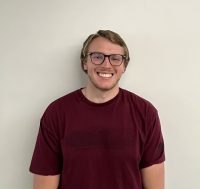 Kyle Smedley, Ball State University
Kyle Smedley, Ball State University
INDIANAPOLIS – Maciej Mazur wore a Detroit Red Wings hoodie and a tan, flat-billed
Chicago Bulls hat with the tag still on it. He and his partner, Agata, both smiled as they read the
description of a Tom Jernstedt statue nestled on the corner of Georgia and Illinois Street.
The Polish couple didn’t know who Jernstedt was, and what they read on the sign likely won’t make much of an impact on them. It was just another step toward fully immersing themselves in
another new, American city.
It was the Mazurs fourth time visiting the United States but their first in Indiana. While they arrived in America less than a week ago, they drove around the Midwest to visit cities like Chicago, Milwaukee, Detroit, Cincinnati and Indianapolis. Aside from Chicago, none of the cities the Mazurs spent time in this week are normally large tourist locations.
The two associated the Circle City with the Indianapolis 500, as most do, but they realized in less than 24 hours that the city was much more than the racing capital of the world when they visited Howl at the Moon and Pearl Street Pizzeria & Pub last night.
To them, visiting Indianapolis and America itself offers a welcome distraction from the harsh realities that face much of East Europe.
Maciej still remembers February 24, 2022. It was a Thursday, and Russia officially invaded Ukraine after eight previous years of war.
By Friday, the Mazurs made all three of their rental apartments available to host Ukrainian families seeking safety, free of charge.
“Almost every day, we were picking up people from the railway station,” Maciej said.
Poland is one of seven countries bordering Ukraine, and the Mazurs’ home city of Warsaw is less than six hours away from Lviv, the sixth largest city in Ukraine. Their three extra apartments quickly filled.
“I remember we were on the phone for days trying to find some place for the families to live,” Agata said.
When Russia first invaded Ukraine, Agata remembered regularly packing and unpacking small rucksacks in case she, Maciej and their three-year-old son, Mikolaj, had to flee their home country. Nearly three years later, the Russia-Ukraine war is commonplace in Poland.
Maciej said he reads newspaper articles about bombings in Ukraine daily. In his words, citizens of Poland have learned how to live with the tensions of war hanging over them.
The Mazurs expected the United States’ atmosphere to feel the same as it does in Europe, given the upcoming Presidential Election in less than three weeks. While they have seen enough of apolitical presence to understand that a major election is coming sooner rather than later, they were surprised by a lack of campaign advertisements in every major U.S. city they have visited compared to the bombardment of election-based promotions in Poland.
While Maciej and Agata enjoy sight-seeing, watching musicals and learning about the U.S. cities they have traveled to, their main reason for traveling overseas was to learn more about the election. The Mazurs have paid attention from afar, and their goal this October was to visit as many swing states as possible.
They realize Indiana is not quite one of those, but that’s why traveling through Wisconsin and Michigan was a priority.
“We really feel the support coming from (the U.S.) right now, and I wouldn’t like it to change,” Agata said. “We are really lucky to have the option to travel. Hopefully it will stay this way.”
Maciej was eager to chime in.
“That’s why it’s so important for this war to be over,” he said.
It’s a 10-hour flight from Warsaw to the U.S., but Agata said America has truly felt like home during her sporadic visits. Although Maciej’s parents are keeping Mikolaj while they visit the U.S., Maciej said he intends for his son’s first trip out of Poland to be a visit to America.
“Right now, he’s focused on throwing stones, not visiting big cities,” Maciej said.
The Mazurs know Polish natives who have already bought apartments or houses in countries like Spain, just in case they need to leave the country if Russia decides to invade. If the situation arose, the Mazurs have considered the U.S. as their relocation option.
In fact, they laughed as they pictured enrolling Mikolaj in an American high school or university more than a decade from now. Whether or not Indianapolis becomes a significant location on the Mazur’s tour across the Midwest, they happily welcome any U.S. destination as a refuge from the war-based uncertainties that surround their home country.
“We feel safe here,” Maciej said.
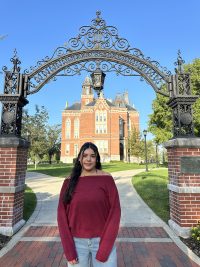 Vanessa Torres, DePauw University
Vanessa Torres, DePauw University
Every weekday at 6am, before the sun has a chance to rise, Luis Solis, 21, is already in his neon green vest and white hard hat getting dirty–and sometimes bloody.
With his blue rubber gloves on, he is on a seemingly endless field of broccoli. Still an amateur, he attempts to cut the vegetable from its place on the ground, where it has been growing for the past 60 days, and cuts himself instead. Shaking, it is not until he takes off the rubber glove that Solis realizes his glove is filled with blood. He is sent home, cutting his usual 12 hour shift short.
This is a typical day for Solis, Kevin Eia, 21, and Antonio Corona, 21, all Mexican American harvest workers for Corteva Agriscience from Imperial Valley California.
Their parents migrated from Mexico and the only request they had for their sons was for them to finish high school. Solis, Eia, and Corona met in their high school welding class and where they later began working in the fields together. Another one of their friends, Prince Quevedo, 21, was the youngest to start working–he was fourteen. From 6am to as late as 6:30pm, the boys would plant, harvest, and pick a variety of fruits and vegetables like grapes, watermelon, cauliflower, and corn.
Corona is also a student at Imperial Valley California alongside Eia. Corona is studying cyber security while Eia is majoring in Computer Science. Currently, they and a group of coworkers are in Indianapolis on a month and a half-all-expenses paid trip to inspect corn.
77-100% of the food energy consumed in the United States comes from crops that are not native to the region, like corn, according to the Crop Trust. Corn, also known as maize, is indigenous to Mexico.
“We were sent to look at trailers of corn and pick out the good ones and bad ones. If they have pimples on them and stuff, we throw them out,” said Solis.
Majority of the time, harvest work is not this luxurious. Often, field workers are outside in scorching hot and freezing climates. Apart from the weather, Solis said that the pressure from their supervisors can be very difficult. “They want you to go fast, fast, fast. They don’t give you enough breaks or sometimes they even cut your breaks so you can finish the work. They don’t let you go to the restroom sometimes. It’s hard,” he sighed.
Corona is one of the supervisors for the company. He bashfully shared that he gets paid one dollar more an hour than his friends for translating instructions to other workers, seeing as he is one of the few fluent in both English and Spanish.
“We’re here to work, get money, and go back to over there [Mexico]. In Mexico, the salaries are much lower. They get paid $100 a week and here [US] we get paid $1,000 a week.” During the harvest season from Sept 5th through Oct 23rd, there are more opportunities to work. Out of this season, it becomes challenging to find jobs in California.
In a scholarly article titled “The Effect of the Minimum Wage on Poverty,” it stated that in January 2019, the Mexican government announced an increase in the minimum wage: in most of the country it increased by 16 per cent, while in 43 municipalities along the U.S. border it increased by 100 per cent. After some calculations, it found that poverty along the border decreased by 2.6-3.0 percentage points. Despite this increase in wages, the amount of money they get paid in the US is still substantially more.
Corteva Agrisciences’ purpose is to “enrich the lives of those who produce and those who consume, ensuring progress for generations to come.” Through their job, Solis, Eia, and Corona were able to move out of their parents’ home, live together, and build a life for themselves despite the strenuous working conditions. It is through their efforts that Corteva can follow through on sustainability initiatives, aiding in having access to healthy produce to sustain us.
According to the International Center, Corteva’s official headquarters is located in Indianapolis where they have maintained a thriving agriculture research hub. Since it started, the company has donated over 75,000 pounds of produce to nearby food pantries, “marking a tremendous impact on local sustainability.” This past year, Corteva donated more than $500,000 to the people affected by the 7.8 magnitude earthquake in Turkey, close to the Syria border.
Solis, Eia, and Corona are enjoying their break from cutting down vegetables for hours on end to sightsee in Indianapolis, a more “chill vibe” in comparison to Imperial Valley, said Solis. Yet, the boys enthusiastically agreed that above all they are looking forward to going back to Mexico, their homeland.
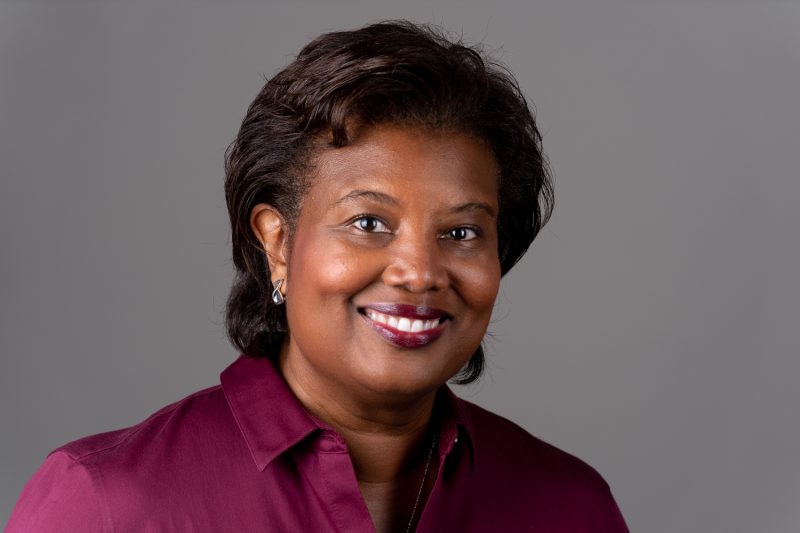
Staff headshot of Lisa Mathews at the Associated Press bureau in Washington, Wednesday, Sept. 28, 2022. (AP Photo/Andrew Harnik)
Lisa Matthews
Speaker
Lisa Matthews is a twenty plus-year veteran of The Associated Press (AP), where she currently serves as a Deputy Director and Planning Editor for U.S. News, responsible for next-day coverage and planning for major events. Previously, Lisa was the assignment manager for U.S. Video. She began her career with the AP in 1995 as a writer and in-house reporter for AP’s broadcast wire.
In 2021, Lisa served as the 114th President of the National Press Club. She led the Club’s first-ever all-woman leadership team and expanded the club’s outreach to historically Black colleges and universities, offering journalism and communications graduates free one-year memberships. Before her current AP role, Lisa worked in public relations as vice president at Hager Sharp, where she developed media strategies.
Lisa has earned two Edward R. Murrow Awards – one in 2002 for outstanding coverage of the events on September 11, 2001, and her second in 2010. Lisa is also the first working journalist inducted into the National Capital Chapter Public Relations Society of America (PRSA) Hall of Fame. She was also among the first class of honorees for the Multicultural Media & Correspondents Association’s “Sheroes in Media.” She is featured in the book “Women Mean Business” for contributions in her field.
Lisa received her B-A in communications from James Madison University.
The writing competition petition pays homage to the late Indy Star journalist Tom Keating, a beloved columnist and Lilly Endowment executive who was especially good at telling the stories of everyday people.
Thank You to Our Sponsors

![]()

Since its inception in 1986, the Keating program has awarded nearly $200,000 to Indiana college and university students.
Overview of the Competition
Thomas R. Keating
(1939-1985)
Thomas R. Keating was a popular long-time columnist for The Indianapolis Star. Known for his portraits of Hoosiers from all walks of life – from washcloth salesmen to police officers to politicians – Keating wrote five columns per week, and he did it with energy and enthusiasm, for 14 years.
Indianapolis was his hometown, and its stories were the center of his work. He was a graduate of Cathedral High School and attended both Ball State and Indiana universities. A collection of his columns, “Indiana Faces and Other Places,” was published in 1982.
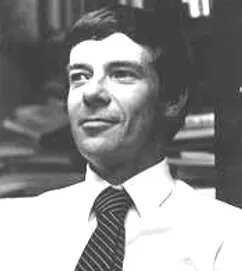
Tom Keating
Keating died in 1985 at the age of 45.
The Keating competition is a daylong feature writing competition among the premier journalism students at Indiana colleges and universities. Since its inception, the program has awarded roughly $170,000 in cash prizes. The competition is named after Keating.
Each year, finalists are sent out to find interesting stories in the heart of Indianapolis. They have five hours from the beginning of the assignment to find subjects, conduct interviews and write their stories on deadline. The Indianapolis Star provides space in its newsroom for the students to work.
Archive of previous years’ contests
2023
37th Annual Keating Competition
Assignment:
Everyone has a story. This is what Tom Keating wrote about five days a week at The Indianapolis Star. He wrote about ordinary people with stories. Find a compelling story in Indianapolis.
Winners:
- Kyle Smedley, Ball State University
- Erin Bruce, Franklin College
- Matthew Press, Indiana University
Other Finalists:
- Ashley Wilson, IUPUI
- Carolyn Marshall, Indiana University
- Dezaray Clawson, Purdue Fort Wayne
- Eliana Alzate, DePauw University
- Jakyra Green, Goshen College
- Justin Haberstroh, IUPUI
- Maggie Eastland, University of Notre Dame
Speaker:
- Dana Benbow, IndyStar
2022
36th Annual Keating Competition
Assignment:
Everyone has a story. This is what Tom Keating wrote about five days a week at The Indianapolis Star. He wrote about ordinary people with stories. Find a compelling story within the “Mile Square” of Downtown that is bordered by North, South, East and West streets.
Winners:
- Isaac Gleitz, Franklin College
- Maya Wilkins, Ball State University
- Nadia Scharf, Indiana University
Other Finalists:
- Sydney Byerly
- Cate Charron
- Elissa Maudlin
- Mary Claire Molloy
- Gabi Morando
- Augusta Nafziger
- Lauren Ulrich
Speaker:
- Tyler Fenwick, a 2017 Keating finalist and reporter for The Indianapolis Recorder Newspaper
2021
35th Annual Keating Competition
Assignment:
“Indianapolis in Flux.” Students were encouraged to look at how downtown was emerging from the pandemic, ongoing race relations or weathering the large-scale construction projects.
Winners:
- Augusta Nafziger, Goshen College
- Alexa Shrake, Franklin College
- Taylor Wooten, Franklin College
Other Finalists:
- Tabby Fitzgerald
- Evan Gerike
- Isaac Gleitz
- Carolina Puga Mendoza
- Mary Claire Molloy
- Ryley Ober
- Haley Pritchett
Speaker:
- Sarah Bahr, a 2017 Keating finalist and freelance writer for The New York Times.
2020
34th Annual Keating Competition
Assignment:
We were unable to gather in person during the COVID pandemic and instead asked students to submit their best published writing on the past year’s most pressing topics: the pandemic, social justice, the election or campus news.
Winners:
- Mary Claire Molloy, Indiana University
- Jordan Smith, Purdue University
- Erica Irish, Franklin College
2019
33rd Annual Keating Competition
Prizes Awarded:
$6,000
Assignment:
Downtown Indianapolis – Behind the Scenes
Winners:
- Erica Irish, Franklin College
- Cameron Drummond, Indiana University
- Riley Eubanks, Ball State
Other Finalists:
- Mary Bernard, University of Notre Dame
- Lydia Gerike, Indiana University
- Tierra Harris, Ball State University
- Lexi Haskell, Indiana University
- Abigail King Goshen College
- Gabe Miller, Goshen College
- Kelli Smith, University of Notre Dame
Speaker:
Samantha Schmidt, gender and family issues reporter at the Washington Post and 2014 Keating Competition winner.
2018
32nd Annual Keating Competition
Assignment:
Events at the the Indiana State Fairgrounds
Winners:
- Dana Lee, Butler University
- Laurel Demkovich, Indiana University
- Shelby Mullis, Franklin College
Other Finalists:
- Lauren Fox, University of Notre Dame
- Mary Freda, Ball State University
- Lydia Gerike, Indiana University
- Emma Jones, Hanover College
- Brynn Mechem, Ball State University
- Maria Manuela Mendez, DePauw University
- Emily Sabens, Ball State University
Speaker:
Margaret Sutherlin, social media manager for Bloomberg in New York City and a 2009 Keating winner.
2017
31st Annual Keating Competition
Assignment:
Veterans Day
Winners:
- Jack Evans, Indiana University
- Madison Dudley, DePauw University
- Taylor Telford, Indiana University
Other Finalists:
- Sarah Bahr, IUPUI
- Courtney Becker, University of Notre Dame
- Austin Candor, DePauw University
- Laurel Demkovich, Indiana University
- Tyler Fenwick, IUPUI
- Dana Lee, Butler University
- Sarah Verschoor, Indiana University
Speaker:
Rachel Podnar, now a news editor at The Washington Post Express, is a previous Keating winner and graduated from Ball State University in 2016.
2016
30th Annual Keating Competition
Assignment:
Stories involving wheels
Winners:
- Taylor Telford, Indiana University
- Carley Lanich, Indiana University
- Hannah Alani, Indiana University
Other Finalists:
- Amanda Belcher, Ball State University
- Alan Hovorka, Ball State University
- Brody Miller, Indiana University
- Grace Palmieri, Indiana University
- Casey Smith, Ball State University
- Briana Susnak, Indiana University
- Matthew VanTryon of Butler University
Speaker:
Eric Bradner, a CNN Politics reporter fresh off the 2016 campaign, shared stories from the campaign trail and the night of the election.
2015
29th Annual Keating Competition
Assignment:
Circle Centre Mall
Winners:
- Grace Palmieri, Indiana University
- Anicka Slachta, Indiana University
- Annie Garau, Indiana University
Finalists:
Dakota Crawford, Ball State University
Hannah Fleace, Indiana University
Annie Garau, Indiana University
Danielle Grady, Ball State University
Alison Graham, Indiana University
Kaitlin Lange, Ball State University
Grace Palmieri, Indiana University
Anicka Slachta, Indiana University
Mary Katherine Wildeman, Indiana University
Speaker:
Michael J. Sanserino, a two-time Keating winner and Sports Editor at the Pittsburgh Post-Gazette.
2014
28th Annual Keating Competition
Assignment:
Indianapolis’s Old Northside
Winners:
- Samantha Schmidt, Indiana University
- Michael Majchrowicz, Indiana University
- Ryan Howe, Ball State University
Other Finalists:
- Hannah Fleace, Indiana University
- Danielle Grady, Ball State University
- Evan Hoopfer, Indiana University
- Alexandra Kincaid, Ball State University
- Kathryn Moody, Indiana University
- Jacob Rund, Franklin College
- Anicka Slachta, Indiana University
2013
27th Annual Keating Competition
Assignment:
Indianapolis Cultural Trail
Winners:
- Michael Auslen, Indiana University
- Evan Hoopfer, Indiana University
- Jessica Contrera, Indiana University
2012
26th Annual Keating Competition
Assignment:
Fountain Square Historic District
Winners:
- Katie Mettler, Indiana University
- Victoria Ison, Ball State University
- Claire Wiseman of Indiana University
Speaker:
Jeffrey H. Smulyan, chairman, president and CEO of Emmis Communications, spoke about how the media need to find new business models for their products.
2011
25th Annual Keating Competition
Winners:
- Lauren Sedam, Indiana University
- Michael Auslen, Indiana University
- Danielle Paquette, Indiana University
Other Finalists:
- Claire Aronson, Indiana University
- Elizabeth “Biz” Carson, Indiana University
- Margaret Ely, Indiana University
- Lindsey Erdody, Indiana University
- Lindsey Gelwicks, Ball State University
- Sean Morrison, Indiana University
- MaryJane Slaby, Indiana University
2010
24th Annual Keating Competition
Winners:
- RachelStark, Indiana University
- CJ Lotz, Indiana University
- Christine DiGangi, DePauw University
Other Finalists:
- Brittany Brownrigg, Franklin College
- Renee Bruck, Franklin College
- Elizabeth “Biz” Carson, Indiana University
- Julie Crothers, Franklin College
- Caitlin Johnston, Indiana University
- Andrew Maddocks, DePauw University
- Sean Morrison, Indiana University
- Charlie Scudder Indiana University
- Avi Zaleon, Indiana University
Speaker:
Pulitzer Prize-winning author Tom French
2009
23th Annual Keating Competition
Winners:
- Margaret Sutherlin, DePauw University
- Sarah Hutchins, Indiana University
- Lana Kunz, University of Southern Indiana
Other Finalists:
- Natalie Avon, Indiana University
- Travis Braun, Franklin College
- Lauren Clason, Indiana University
- Stephanie Doctrow, Indiana University
- Amanda Junk, Ball State University
- Sean Morrison, Indiana University
- John Seasly, Indiana University
Speaker:
New York Times White House Correspondent Jeff Zeleny
